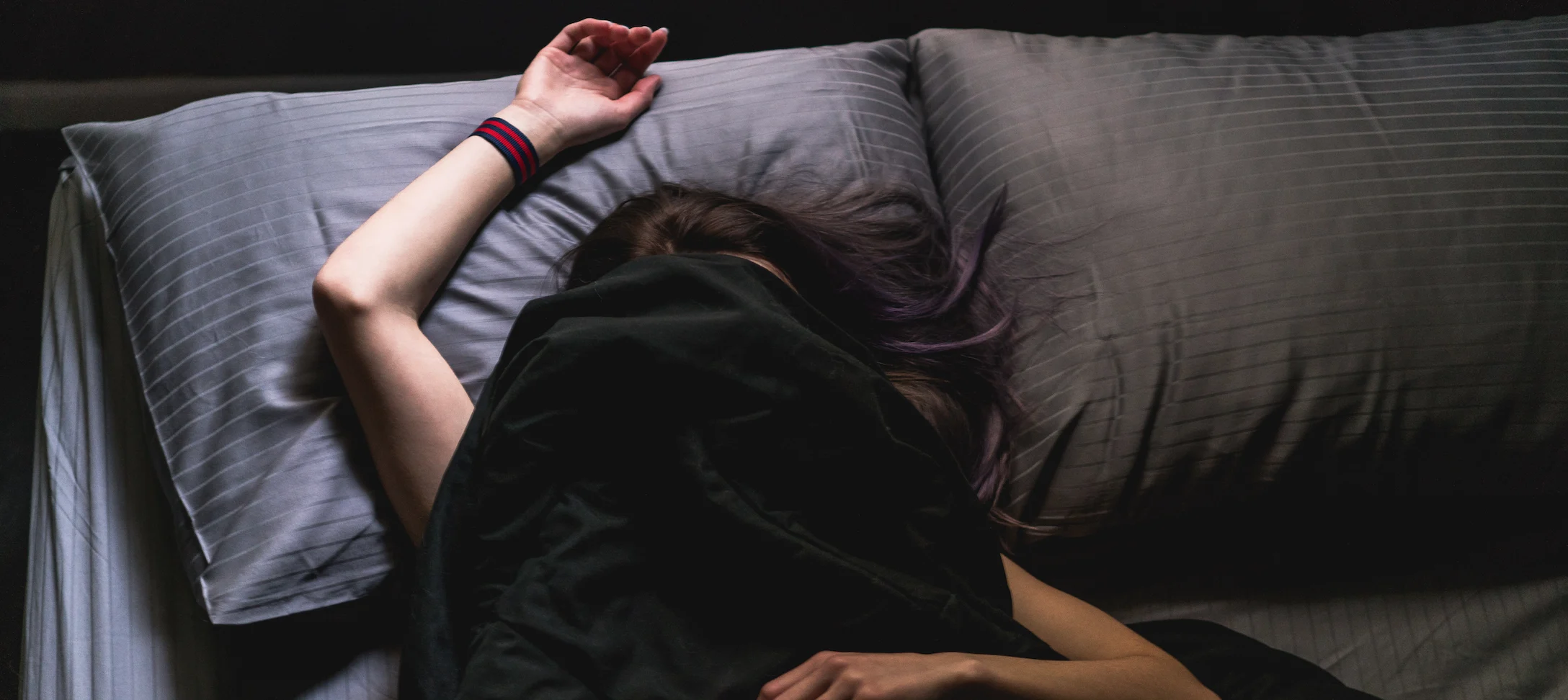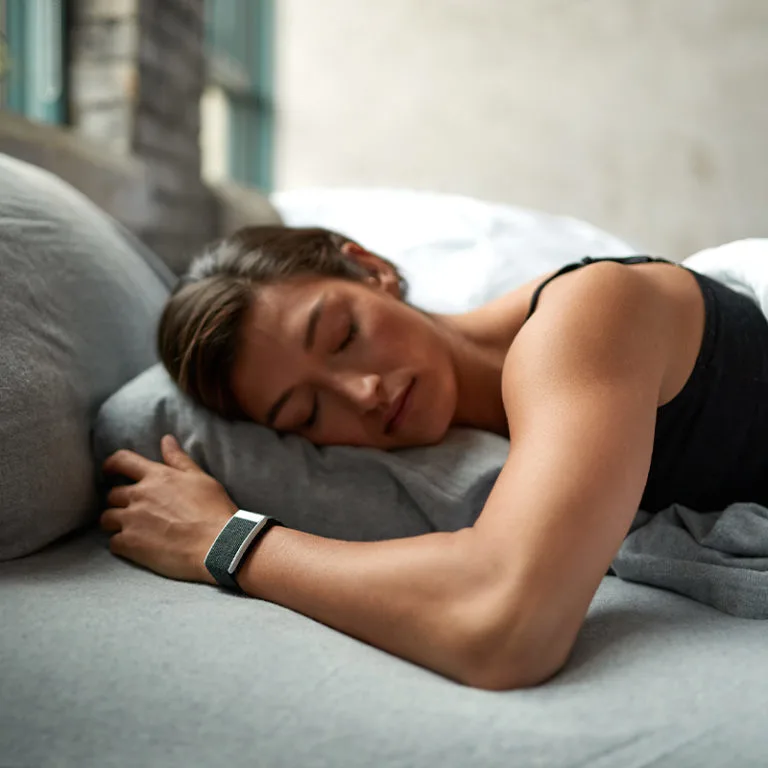Topics
- Article
- Sleep
28 Techniques to Fall Asleep Fast

There’s nothing more frustrating than lying in bed and not falling asleep. Here are 28 tips, in no particular order, on how to fall asleep fast, so you can start tomorrow fresh.
Tossing and turning and staring at the alarm clock leads to anxiety and stress, which also prevent sleep. We've gathered more than two dozen tactics that have helped others fall asleep fast. Find the ones that work for you.
How to Fall Asleep Fast with these 28 tips
Most of us function better in our daily lives when we are able to stick to regular routines. Falling asleep is no different. Your body will have an easier time getting to sleep if you do the same things every night so it knows what’s coming. Developing a consistent bedtime ritual creates moments of separation between day and night and lets your body know that it’s time to sleep. Beyond the usual stuff like brushing your teeth and putting on your pajamas, here are some sleep-promoting activities to consider adding to your routine:
1. Yoga, stretching or meditation.
A gentle 10-15 minute yoga routine can calm your mind and heart and prepare you for bed.
2. A warm bath or shower
This allows your body temperature to drop more easily, part of the natural process of falling asleep.
3. Reading or journaling (not electronically)
Reading a real book or magazine, rather than an ereader, can boost mood and reduce stress. Journaling with pen and notebook can also help prepare your mind for some z’s.
4. Block blue light
Block blue light up to 3 hours before bed, if you want to wear special glasses. Blue light delays the release of melatonin, a sleep-inducing hormone that naturally starts releasing into your system around bedtime.
5. Drink a glass of warm milk or hot herbal tea.
Milk contains tryptophan and melatonin, which may aid sleep. Chamomile, valerian root, lemon balm, and lavender teas may reduce symptoms of insomnia and stress.
6. Eat some carbs
It may not be ideal for those on a Keto diet, but eating carbohydrates four hours before bedtime helps some people fall asleep faster and sleep better. Try simple carbs rather than complex ones, which take longer to digest. Foods like white rice, pasta, white bread, potatoes, or even a couple cookies. Even if you’re trying to limit carbs, having one serving at dinner well before bedtime may aid sleep.
7. Get up if you can’t sleep
If you don’t fall asleep quickly, don’t just lie there thinking about it. Get up and do something you find relaxing (such as the ideas above) until you feel sleepy again. And here are some things to avoid or eliminate from your current routine:
8 Don’t consume caffeine
Ensure you don't have caffeine within 4 hours of bedtime.
9. Stay away from fatty foods
Make sure you stay away from fatty foods that are hard to digest.
10. Skip working
Skip working or using a screened device in bed, you want your body to associate your bed with sleep.
11. Avoid late-night workouts
Strenuous workouts in the evening increase your body temperature and can make going to sleep harder.
12. Don’t drink alcohol before bed
While alcohol is a sedative, it delays REM sleep as your body works to process the alcohol. Plan your bedtime so you have at least three hours after having a drink before turning in.

Hide your alarm clock if you're prone to staring at it when you can't sleep.
Part of getting to sleep quickly is putting yourself in an environment that’s as conducive to sleep as possible. Try implementing as many of these as you can in your bedroom:
13. Be comfortable in bed
Be comfortable with a nice mattress, sheets and pillow that you like. If your mattress hurts your back, consider buying one with different firmness. Find a pillow that matches your sleep style, whether you’re a back, front or side sleeper.
14. Make it cool
Make your bedroom between 60-67 degrees Fahrenheit.
15. Darkness is key
Use blackout curtains, cover any LEDs around the room, or wear a sleep mask.
16. Eliminate noise
If eliminating all noise is not an option, use a white noise machine or play relaxing music that is calm and quiet. Alternatively, try listening to ASMR or bedtime stories for adults.
17. Get rid of your clock
Get rid of your clock for the light, but also because the stress of watching it keeps you awake.
18. Leave your phone in another room
The temptation to check your phone at night can be strong, and the blue light as already stated, delays the release of melatonin.
19. Wear socks to bed
Wearing socks increases blood flow to feet and heat loss through the skin, lowering body temperature and thus, making you sleepy.
20. Add an extra blanket
If you don’t like socks, try adding an extra blanket at the end of the bed to keep your feet warm.
21. Don’t let your pet sleep with you (unless that makes trying to sleep worse)
Sometimes sleeping with a pet helps owners sleep better. Having our cats and dogs sleep on (or in) the bed with us can reduce anxiety. But other times, cat dander can aggravate allergies, or the dog wakes you up five times a night. Keeping pets out of the bedroom is one option to try, or placing a pet bed in your room so the pet has a place to sleep near you, but won’t sleep on you.
22. Use Aromatherapy
Scents such as lavender may reduce stress levels, improve mood, reduce anxiety and increase sleep quality. Rose, chamomile, geranium, jasmine, sweet marjoram, clary sage and frankincense may also relax you. Learn More: 12 Sleep Myths Debunked
23. Keep regular hours
One of the easiest natural ways to fall asleep is simply to go to bed at the same time every night. As mentioned above, your body likes routine and wants to be able to anticipate the onset of sleep. A consistent bedtime allows for this to happen. Sleep consistency also helps your body maintain its natural circadian rhythm, your 24-hour internal biological clock.
24. Use the 4-7-8 method
We’re not making any claims or guarantees with this one, but the 4-7-8 breathing technique is a method of relaxation that works quickly for many people. Here’s how:
- Put the tip of your tongue on the roof of your mouth just behind your front teeth.
- Breath in through your nose for 4 seconds.
- Hold it in for 7 seconds.
- Breath out through your mouth while making a “whoosh” sound for 8 seconds.
- Repeat this pattern 4 times.
25. Use the military method
- Lay down and, beginning with your face, tense your muscles then allow them to loosen naturally. relax your entire face, including the muscles inside your mouth.
- Take deep, calming breaths.
- Drop your shoulders and release tension and lie your hands beside your body, continue relaxing your thighs, calves and feet.
- Clear your mind for 10 seconds and imagine a relaxing scene. Or repeat the words “don’t think” for 10 seconds.
- With some practice, you should be asleep within 10 seconds.
26. Use progressive muscle relaxation
Similar to the military method, but not as fast, progressive muscle relaxation (PMR), also known as deep muscle relaxation, helps you unwind by tensing each muscle group in turn and relaxing it. The technique is used to control stress and reduce symptoms of chronic pain, in addition to sending you to dreamland.
- Inhale and contract one muscle group (your eyebrows and forehead for example) for 5-10 seconds, then relax.
- Wait 10 seconds and tense another muscle group.
- It’s often helpful to start at the top of the head or at the feet and work your way methodically through the muscle groups.
- You may not finish tensing and relaxing before you fall asleep, and that’s OK.
27. Try paradoxical intention
Tell yourself you’re not tired and to stay awake. That may put you right to sleep. Paradoxical intention is one method people with insomnia use to get relief. Trying to sleep can create performance anxiety. If you find yourself stressed and anxiously looking at the clock give this method a shot.
28. Use visualization
Visualization is the same thing as daydreaming but in bed. Instead of counting sheep, try imagining a peaceful setting and the feelings that go with it. For example, a calm beach, a forest, or a waterfall. Basically, picture anything that Bob Ross may have painted.
Use WHOOP to learn which methods work for you
WHOOP automatically detects exactly when you fall asleep each night, as well as the amount of time you spend awake, in light sleep, and in the restorative stages, REM and deep sleep. By logging in the app the time you go to bed, WHOOP will measure your sleep latency--how long it takes you to fall asleep. Monitoring your sleep latency can allow you to determine which of these tips work best for you. The WHOOP Sleep Planner also uses your own circadian rhythm to make recommendations on bed and wake times in order to maximize how efficiently you sleep. In addition to tracking the quality and duration of your sleep, WHOOP also quantifies the strain your body takes on each day and lets you know how recovered you are each morning.

Tracking sleep latency with WHOOP can help you find the best way to fall asleep fast.
This story was originally published Feb. 5, 2020 and was updated June 30, 2021.